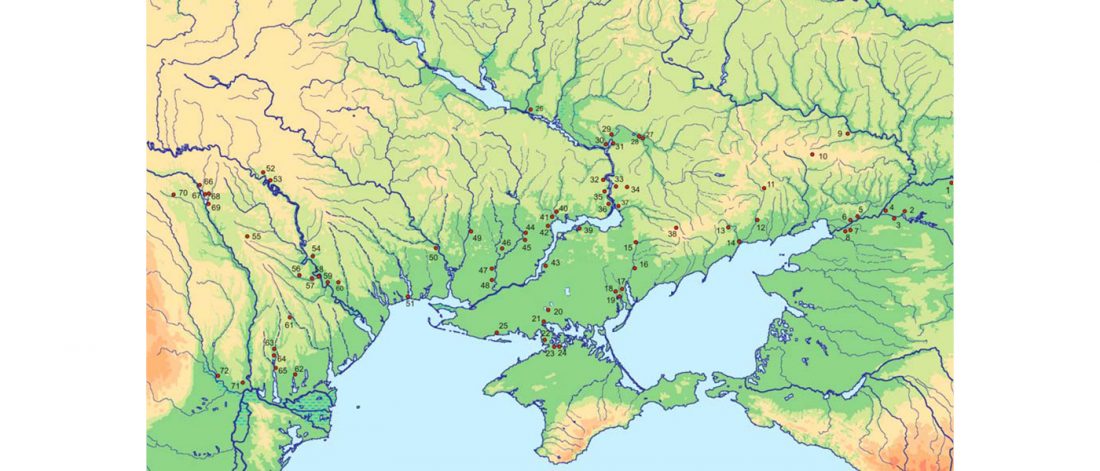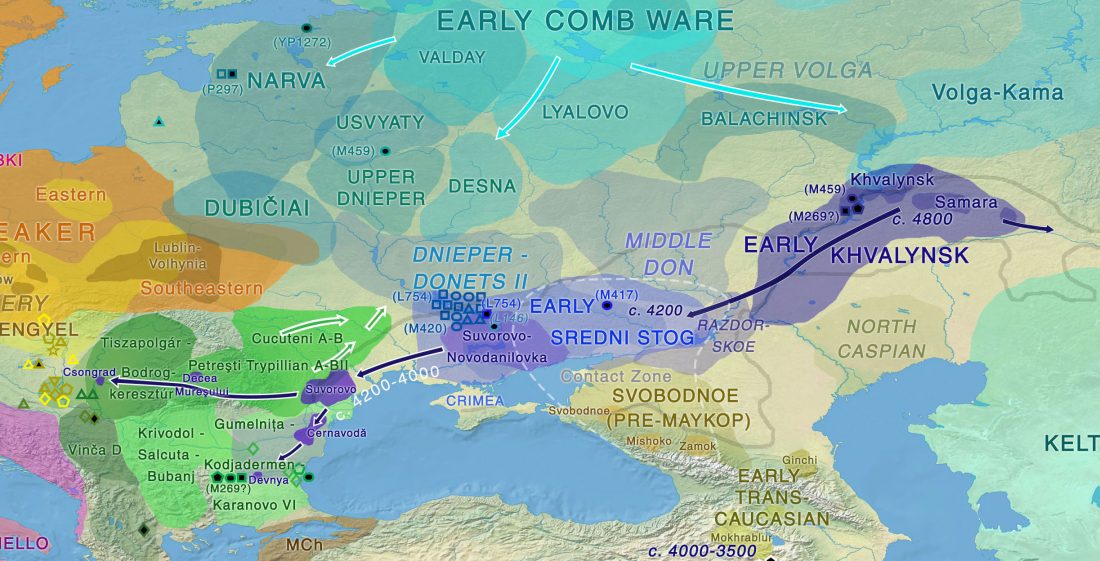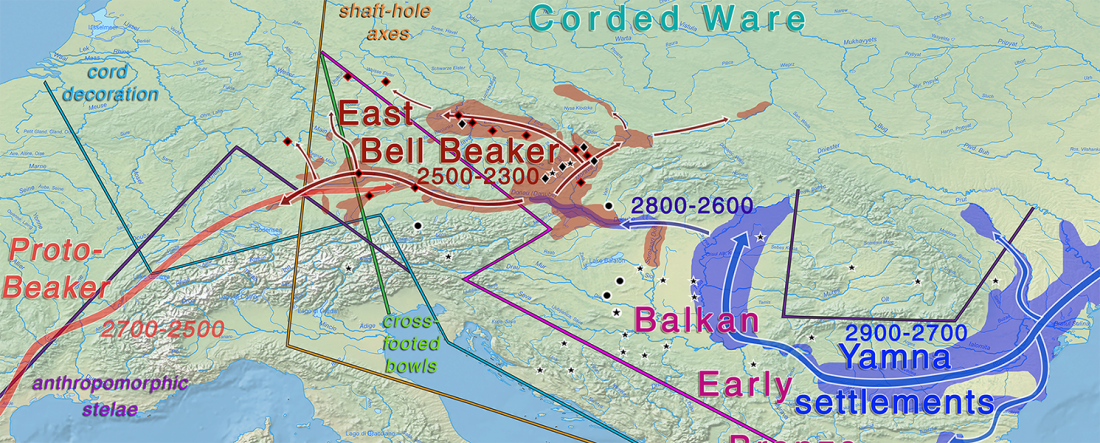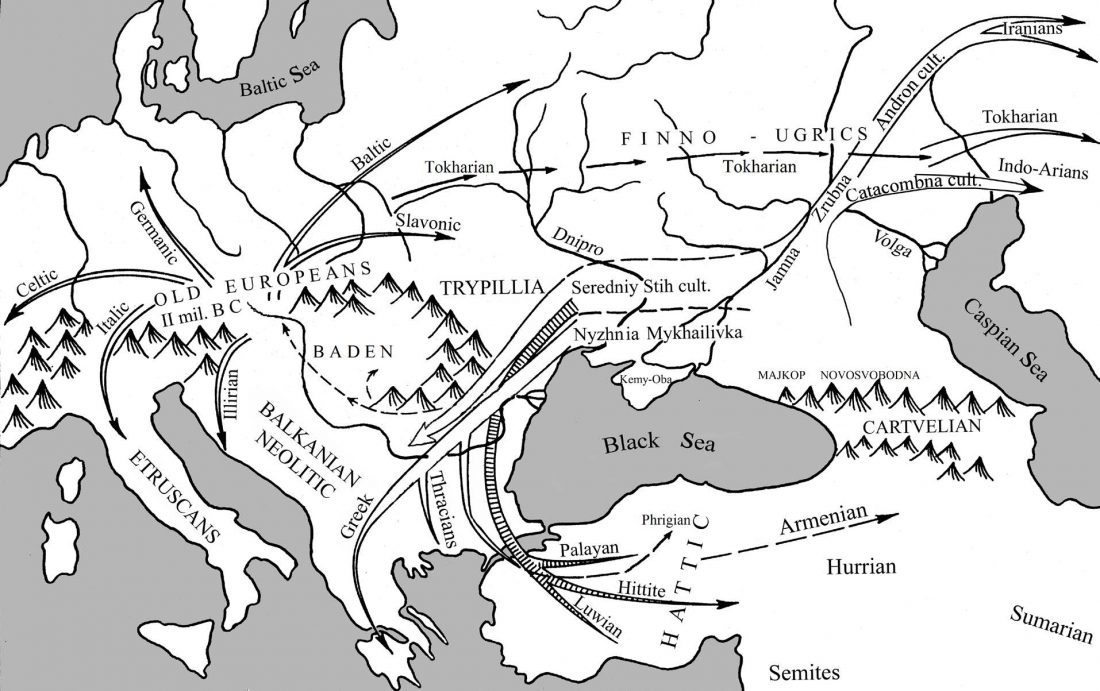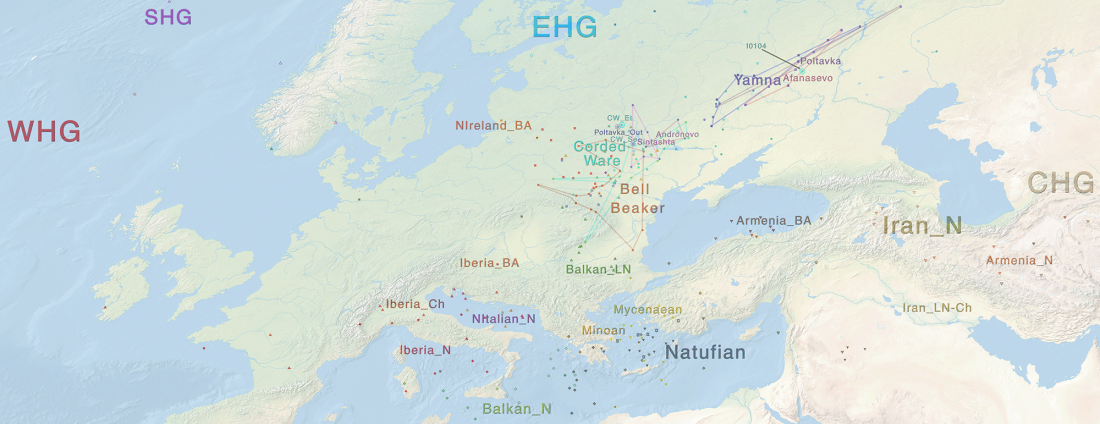Local cultural settings and transregional phenomena: on the impact of a funerary ritual in the Lower Danube in the 4th millennium BC, by Frinculeasa & Mirea, In: Buletinul Muzeului Judetean Teleorman, Seria Arheologie, 9, 2017, p. 75-116.
Interesting excerpts (emphasis mine):
… Read the rest “The Lower Danube during the Eneolithic, and the potential Proto-Anatolian community”1. In the area under discussion, around 4300-4200 BC – a chronological segment marking the evolutionary peak of ‘Old Europe’ (Anthony 2007: 225), represented by the Cucuteni A/ Tripolie BI, Aldeni-Bolgrad, Gumelniţa-Karanovo VI cultures – the first tumular burials appeared (Govedarica 2016: 85). However, flat burials, marked by the existence of some allogeneous elements in the local
